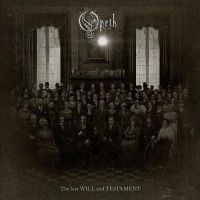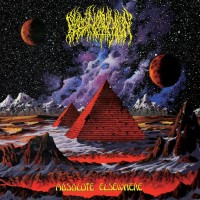Nu metal, setting things straight
| Written by: | Haddonfield |
| Published: | June 23, 2009 |
For many years now the term "nu metal" has somewhat annoyed me. It's not because I don't believe in its right to exist as a phrase defining a distinct genre. It's the way people tend to use it to label almost any band that doesn't fit into the extreme metal tag since the late 1990's. Being a student specialized in genre studies, albeit cinema, I have spent many a moment reflecting upon the actual definition of nu metal. This article is an attempt to define the genre whilst also trying to seek its origins and to distinguish some labeled nu metal bands from this genre.
So lets start with the foundations of nu metal. I believe it's safe to say that the genre started in 1997 with the release of two albums. First of all, Korn's Follow the Leader, which integrated a dense element of hip/hop throughout, and secondly, Deftones' Around the Fur. It is funny to note how these two bands were also at the basis of the song "Wicked" released on Korn's Life Is Peachy album in 1996, which is heavily rap inspired. Yes, there were elements pushing towards the making of the nu metal genre prior to Korn and Deftones, but these two bands are the ones who set the foundations and made it a genre per-say. On the other hand, a band named Limp Bizkit had just released its first album which would evidently seem to cement nu metal as a genre. It is also obvious that the duo between Aerosmith and Run DMC, coupled with that of Anthrax and Public Enemy, along with bands like the Beastie Boys and Faith No More were major influences on the nu metal stage. However, if one looks closely to how metal evolved, one will find a more logical approach as to why nu metal came about.
If Korn's Follow the Leader is considered nu metal, then what about Korn's first eponymous album and the follow up Life Is Peachy or Deftones' Adrenaline? I remember at school back in the day when Jonathan Davis was screaming out the lyrics to "Good God", we had a term for these bands and others alike: "Neo Thrash". Today, that term has entirely disappeared and to many metalheads will probably come as an insult. But being at school in France, this term wasn't invented by the fans, but by the media of the time. So lets try and understand how this term could have come about. If we consider three of the big thrash metal bands of the 80s, it is pretty easy to comprehend. Fist of all, lets start with Metallica. Throughout the 80s, Metallica produced fine heavy, and sometimes extremely rapid, thrash metal. In 1991, they released their "Black Album" which was far less heavy and less rhythmic than its predecessors. This was then followed up by work that seems to completely ignore the bands original work. Secondly, lets take a look at Slayer. Their 1990 album, Seasons in the Abyss, also seems to distance itself from the band's previous material with catchier and slower tracks than the usual high tempo songs. This was followed up by a weaker Divine Intervention and by Diabolus in Musica which seems to simplify the bands music at a moderate pace. The third band we will look at is Sepultura. Sepultura played a very heavy type of thrash metal in the late 1980s which sometimes even flirted with the death metal genre. In 1993, the band released Chaos A.D., a somewhat different approach to their music. Still thrashy, it is slower and comes across as less technical and brutal. This album was followed by Roots which completely distances itself from the bands early work. Some people say that these bands simply went more mainstream than their counterparts, abandoning the pure thrash metal sounds of the 80s to adopt a more easy-listening approach. However, one could also look at this as a evolution of the thrash genre led by three of its major contributors.
So what has thrash metal got to do with nu metal? If we consider the fact that thrash evolved in the early 1990s, it is safe to consider early Korn, Machine Head, Vision of Disorder and other similar bands as being the product of that evolution. These are the bands that I remember being labeled as "Neo Thrash" before nu metal was even an idea in someone's head. One must now consider two other evolutions to understand how nu metal came about as a genre in the late 1990s. The above mentioned "Neo Thrash" bands took different directions. As Korn, Deftones and Limp Bizkit edged towards the rap integrated music, bands like, ex-Sepultura Max Cavalera's, newly founded Soulfly, Vision of Disorder, Machine Head and Coal Chamber continued to create non-rap based music inspired by the thrash evolution. The difficulties to define these two distinct genres came when a large amount of bands flourished from the success of the above mentioned.
In the late 1990s and early 2000s, a huge amount of bands appeared all seemingly inspired by the Korn evolution or the Sepultura/Soulfly (or Roadrunner Records) one. As bands like Linkin Park, P.O.D., Adema followed in the Korn streak, other bands like Slipknot, System of a Down or Spineshank seemed to follow the more heavier route opened by Soulfly and the like. To this day, I still believe in two distinctive genres. Whether one calls it "Neo Thrash" or something else. It is wrong to classify the spawn of the thrash evolution as nu metal. Nu metal has a heavy rap influence introduced on the mainstage by Korn which probably dates back to the bands previous funk metal style when they played under the name of L.A.P.D.. The verses are usually soft and are followed by a more powerful but melodic chorus. The "Neo Thrash" bands however have less of a rap influence on their music and the structure is often the opposite with heavy verses and melo choruses. It is understandable that the distinction of the nu metal genre causes problems as artists from both the above mentioned genres seemed to borrow from one another's music. Some even crossed over from one genre to the other with Fred Durst, of Limp Bizkit, for example, singing with Soulfly on their first single "Bleed". However, if one looks closely at say Slipknot and Linkin Park, it is very hard to find anything in common between the two bands and for two elements to be part of a same genre, common points are essential.
Guest article disclaimer:
This is a guest article, which means it does not necessarily represent the point of view of the MS Staff.
This is a guest article, which means it does not necessarily represent the point of view of the MS Staff.
Comments
Comments: 8
Visited by: 212 users
| jupitreas hi-fi / lo-life Staff |
| tulkas el parcero |
| Daggon Underpaid M.D. |
| Haddonfield Chucky's Bride |
| jupitreas hi-fi / lo-life Staff |
| Haddonfield Chucky's Bride |
| 4look4rd The Sasquatch |
| ferm |
Hits total: 13510 | This month: 86




 ). I know a lot of people hate rap, and seeing it mixed with metal, is just an insult, or disrespect, maybe. So, for me, nu-metal would actually be just as valid as alternative metal or thrash metal. Why not? Yes, maybe Korn is not as metal as Metallica, or Slipknot isn't as metal as... I don't know. The point is, to some extent in their music, they are metal, only they have other influences to it, and I don't see why that shouldn't be valid. Music is art, art is expression, and you're free to express.
). I know a lot of people hate rap, and seeing it mixed with metal, is just an insult, or disrespect, maybe. So, for me, nu-metal would actually be just as valid as alternative metal or thrash metal. Why not? Yes, maybe Korn is not as metal as Metallica, or Slipknot isn't as metal as... I don't know. The point is, to some extent in their music, they are metal, only they have other influences to it, and I don't see why that shouldn't be valid. Music is art, art is expression, and you're free to express. 